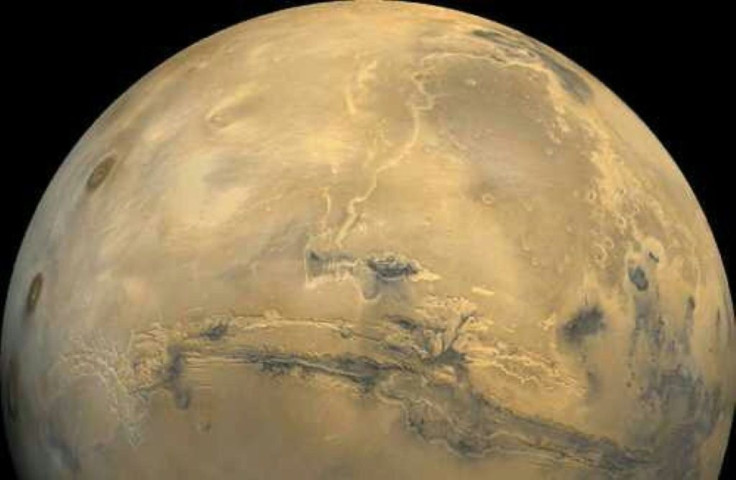Scientists Explore 'Unique' Ways To Create Artificial Magnetic Field On Mars
KEY POINTS
- A magnetic field could help retain the atmosphere for terraforming Mars
- Researchers explored various means of creating an artificial magnetic field
- According to scientists, it's time to think about "new and bold future concepts"
With plans to send humans to Mars, a team of scientists had a look at how they can give Mars a proper magnetic field to make the planet more hospitable.
Current plans for space exploration include sending humans to the moon, then to Mars. However, even though Mars and our planet share some common characteristics, the Red Planet does not have the strong magnetic field that the Earth has, Universe Today reported.
"If humanity is ever to consider substantial, long-term colonization of Mars, the resources needed are going to be extensive," the researchers of a paper to be published in the journal Acta Astronautica in 2022, wrote.
"For a long-term human presence on Mars to be established, serious thought would need to be given to terraforming the planet," they stated.
As NASA explained, unlike the Earth, where the magnetic field comes from the core and surrounds the entire planet, Mars doesn't generate its own magnetic field "outside of relatively small patches of magnetized crust."
This magnetic field is important because it protects the planet from solar wind and ionizing articles, Universe Today explained. Furthermore, the protection of a "magnetic shield" on the Red Planet is a "major requirement" for terraforming, the researchers noted.
So is there a way for Mars to also have a magnetic field like Earth's?
In their study, the scientists explore the "challenges that affect the feasibility of creating an artificial magnetic field capable of encompassing Mars."
"The options for the different approaches to creating a current loop are; (A) molten iron core dynamo, (B) solid superconducting current loop or permanent magnets, (C) a chain of discrete coupled current or magnetic sources and (D) a current driven plasma torus," the researchers wrote.
These options all have their pros and cons. As the researchers noted, "no individual solution comes without vast technical challenges," even ones beyond what they discussed.
According to the researchers, among the options they looked at, restarting Mars' core is "unlikely" to be a viable option. This isn't just because of the number of hydrogen bombs it would take to melt the core, but also because it's so far not even known why the planet's "dynamo stopped in the first place," and that's assuming that it even once had a magnetic field from the core like Earth does.
One of the other options also proposes using the larger Martian moon, Phobos, to create a magnetic field that's actually capable of protecting Mars. This plan is "achievable" but comes with "significant" engineering hurdles, Universe Today noted.
Overall, the researchers' work shows just how much work creating an artificial magnetic field would entail.
"In conclusion, as anticipated the resources needed to create a planetary sized magnetic field are non-trivial and there is much further research to be done," the researchers wrote. "What has been presented here are some unique solutions for the approaches required to create an artificial planetary sized magnetic field," they added.
As the researchers noted, now is the time to think about "new and bold future concepts" and begin to think about solutions to possible problems.

© Copyright IBTimes 2025. All rights reserved.






















